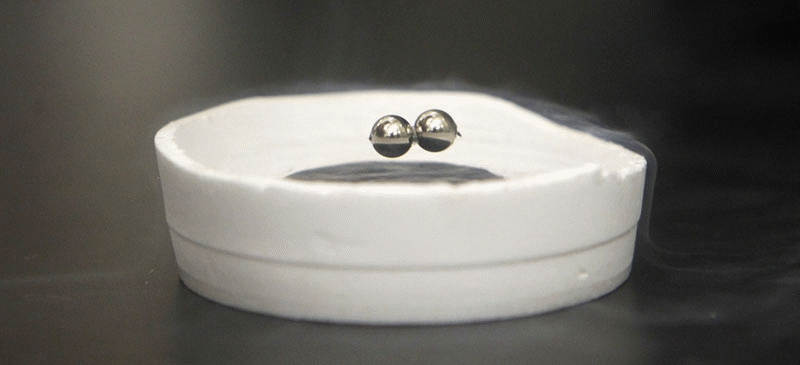 Superconductor that levitates the magnet
Using very powerful magnets and ultra–low temperatures, one can cool substances down to about
0.000006 K, which is pretty close to absolute zero (0 K (or) –273.15 C).
Superconductor that levitates the magnet
Using very powerful magnets and ultra–low temperatures, one can cool substances down to about
0.000006 K, which is pretty close to absolute zero (0 K (or) –273.15 C).
Third Law of Thermodynamics relates the entropy (randomness) of matter to its absolute temperature. “The entropy of a pure perfect crystal is zero (0) at zero Kelvin (0° K)”.
The Third Law of Thermodynamics means that as the temperature of a system approaches absolute zero, its entropy approaches a constant (for pure perfect crystals, this constant is zero).
A pure perfect crystal is one in which every molecule is identical, and the molecular alignment is perfectly even throughout the substance. For non–pure crystals, or those with less–than perfect alignment, there will be some energy associated with the imperfections, so the entropy cannot become zero. Third law of thermodynamics helps in calculating the thermodynamic properties. It is helpful in measuring chemical affinity, behavior of solids at very low temperature and helps in analyzing chemical and phase equilibrium.
The applications of this law have been used to predict the response of various materials to temperature changes. All substances we know (with one exception i.e., Helium), become crystalline as they approach absolute zero.